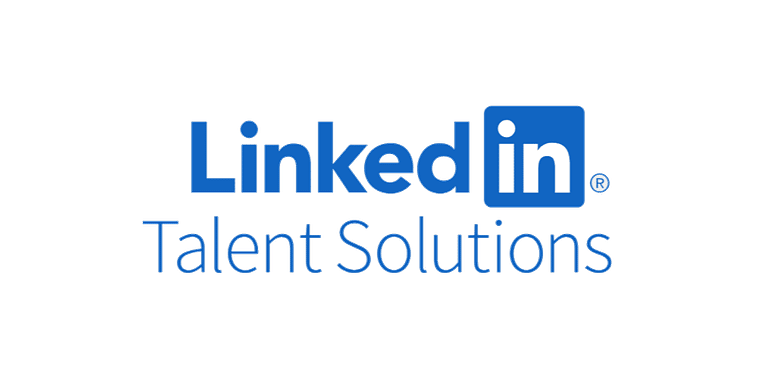Did you know that 76% of hiring managers struggle to find qualified candidates despite spending countless hours screening resumes?
However, some companies are cracking the code with LinkedIn Talent Insights – a powerful data analytics platform that transforms how organizations discover and attract top talent. In fact, businesses using data-driven recruitment tools are twice as likely to improve their hiring quality and reduce time-to-fill positions.
That’s why understanding how to use LinkedIn Insights effectively has become crucial for modern recruitment teams. Whether you’re a seasoned recruiter or new to talent acquisition, this comprehensive guide will walk you through everything from basic navigation to advanced competitive intelligence tactics.
Ready to revolutionize your hiring process with data-driven decisions? Let’s dive into the essential steps for mastering LinkedIn Talent Insights and building a smarter recruitment strategy.
Getting Started with Talent Insights
LinkedIn Talent Insights stands as a sophisticated talent intelligence platform that processes billions of data points to deliver real-time workforce analytics. The platform streamlines market research through a unified interface, enabling smarter hiring decisions based on concrete data rather than assumptions.
Platform access and navigation
After receiving an activation email from LinkedIn Talent Insights, accessing the platform involves a straightforward process. From the LinkedIn homepage, click the Work icon in the upper right corner and select Insights from the dropdown menu. Additionally, users can switch back to their LinkedIn profile by hovering over their profile picture and choosing Go to LinkedIn.
The platform offers two primary analytical tools:
- Talent Pool Report: Provides detailed insights about candidate locations, current employers, and engagement levels
- Company Report: Delivers a comprehensive analysis of organizational workforce trends and changes over time
Setting up your account
Setting up LinkedIn Talent Insights requires careful planning and strategic implementation. Organizations can choose between two deployment approaches:
Phased Launch Strategy:
- Begin with a small group of power users
- Allow deeper attention to early-access users
- Leverage initial successes for broader implementation
- Enable longer training periods and thorough onboarding
Full-Scale Implementation:
- Immediate access for all license holders
- Equal opportunity across the organization
- Scaled training resources
- Broader but potentially less focused adoption
For effective account management, administrators can handle user access through the Account Center. This central hub offers multiple access points:
- Direct email link for first-time setup
- LinkedIn Insights dashboard for existing users
- Dedicated Account Center URL for administrators
The platform supports Single Sign-on (SSO) integration, allowing employees to access the system using their corporate credentials, though this feature remains optional. Organizations can monitor user engagement through detailed activity tracking, ensuring optimal license utilization.
To maximize platform effectiveness, consider these implementation best practices:
- Identify users whose roles align with core business priorities
- Communicate clear value propositions to drive engagement
- Create user groups for streamlined management
- Establish regular training sessions to maintain proficiency
The system allows administrators to manage licenses efficiently through features such as:
- Bulk user addition via CSV upload
- Custom group creation for organized access
- Automated welcome emails and activation tracking
- Flexible permission management for different user roles
By following these structured setup procedures and utilizing the platform’s administrative tools effectively, organizations can establish a robust foundation for their talent analytics program. Furthermore, the platform integrates seamlessly with LinkedIn Recruiter, creating a comprehensive hiring ecosystem that combines strategic planning with tactical execution.
Finding Hidden Talent Pools
Unlocking hidden talent pools requires a strategic approach to data analysis through LinkedIn Talent Insights. The platform processes over 12 billion data points on talent, companies, and schools to provide actionable recruitment insights.
Geographic targeting strategies
Location intelligence plays a vital role in modern recruitment. The platform’s Location tab offers detailed insights into talent distribution across different regions. Recruiters can analyze:
- Market area demographics and hiring demands
- Talent migration patterns between regions
- Gender distribution across locations
- Top employers in specific areas
The system determines candidate locations through profile zip codes and IP addresses, enabling precise geographic targeting. Moreover, market areas are defined using government specifications, ensuring accurate regional talent mapping when more than 50% of members provide city-level location data.
Skills-based searching
The Skills tab presents a comprehensive view of talent capabilities through LinkedIn’s taxonomy of over 35,000 standardized skills. The platform identifies skills through:
- Explicit Skills: Direct listings in profile Skills sections
- Implicit Skills: Natural language processing of job titles, descriptions, and summaries
Significantly, recruiters who incorporate skills filters in their searches experience up to 22% higher InMail acceptance rates. The platform tracks both common and emerging skills, offering insights into:
- Most prevalent skills within talent pools
- Gender distribution across skill sets
- Year-over-year skill growth rates
- Employee skill benchmarking
Industry segment analysis
Understanding industry segments helps optimize recruitment strategies. The platform enables recruiters to:
- Monitor talent movement trends between sectors
- Identify emerging skill requirements
- Track compensation ranges across industries
- Analyze demographic distributions
Currently, consumer services, entertainment, education, government administration, and utilities sectors show the highest adoption of skills-based searching, with 17-18% of searches including skill filters. Meanwhile, industries focusing on entry-level positions often overlook valuable soft skills like communication and adaptability.
The platform’s predictive capabilities ensure only highly confident skill matches appear in results, maintaining a 90% confidence threshold for skill attribution. This precision, combined with real-time supply and demand data, enables organizations to make informed decisions about talent acquisition and development.
Competitive Intelligence Tactics
Market analysis through LinkedIn Talent Insights empowers organizations to make data-driven decisions about their recruitment strategies. The platform processes billions of daily data points, offering real-time insights into competitor activities and talent movement patterns.
Benchmarking against competitors
The Company Report feature enables recruiters to analyze specific organizations, examining crucial metrics about their workforce composition. Organizations can track:
- Employee distribution across roles
- Hiring patterns and attrition rates
- Talent movement between companies
- Gender distribution within industries
The platform’s Industry tab presents detailed insights about talent distribution across different sectors. Recruiters can filter data by:
- Companies
- Locations
- Functions
- Skills
Through competitive benchmarking, organizations gain visibility into:
- Top employers within specific talent pools
- Open positions matching target criteria
- Hiring demand across industries
- Gender distribution patterns
Identifying talent movement trends
Internal mobility has shown a 6% increase year-over-year. Subsequently, the platform’s Talent Flow tab reveals detailed patterns of workforce movement, allowing organizations to:
- Track talent migration between companies
- Monitor industry-specific movement trends
- Analyze geographic talent flows
- Assess skill demand variations
The system’s advanced analytics capabilities help identify:
- Attrition risks and forecast headcount changes
- Supply and demand data across locations
- Remote work opportunities
- Talent migration possibilities
Organizations can leverage these insights to:
- Address current and future skill gaps
- Refine talent sourcing strategies
- Focus recruitment efforts effectively
The platform’s machine learning algorithms process standardized job posts by extracting:
- Titles
- Locations
- Employment types
- Descriptions
- Industry information
Natural language processing models extract skills from job descriptions and standardize titles, making them searchable across the platform. This standardization ensures consistent analysis of:
- Employee tenure patterns
- Educational backgrounds
- Professional experience
- Strategic priorities
By analyzing hiring patterns, organizations can identify:
- Emerging competitors
- Industry shifts
- Geographic expansion signals
- Technological transformation indicator
The platform updates data daily, ensuring organizations have access to current information about:
- Market dynamics
- Competitor strategies
- Talent availability
- Industry trends
Through systematic monitoring of competitor activities, organizations can:
- Identify potential market opportunities
- Anticipate strategic shifts
- Adapt recruitment strategies
- Optimize talent acquisition approaches
Understanding organizational structures provides insights into:
- Strategic priorities
- Decision-making processes
- Operational focus areas
- Growth trajectories
The platform’s comprehensive data analysis capabilities enable organizations to maintain competitive advantages through informed strategic decisions about talent acquisition and retention strategies.
Building Strategic Hiring Plans
Strategic workforce planning through LinkedIn Talent Insights enables organizations to make informed decisions about talent acquisition and development. The platform processes information from LinkedIn member profiles into unique data points, applying machine learning techniques to increase data quality.
Short and long-term planning
Organizations can develop comprehensive talent strategies by analyzing:
- Current workforce composition
- Skills gap assessment data
- Market supply trends
- Geographic expansion opportunities
The platform’s real-time data helps teams:
- Define precise hiring objectives aligned with growth plans
- Adapt goals based on talent competition
- Address current and future skill gaps using trends data
- Inform retention and headcount planning
Budget allocation
A well-structured recruitment budget serves as a financial blueprint for acquiring and onboarding new talent. Essential components include:
Investment Areas:
- Recruitment tools and technologies
- Advertising expenses across channels
- Employer branding initiatives
- Internal costs like recruiter salaries
According to research, companies with strong employer brands experience a 50% reduction in cost-per-hire. Therefore, allocating resources strategically involves:
- Confirming hiring goals
- Reassessing branding messages
- Optimizing technology infrastructure
- Tracking pertinent metrics
Team structure optimization
LinkedIn Talent Insights offers workforce snapshots and benchmarks to help organizations deploy talent effectively. Key aspects include:
Data-Driven Team Planning:
- Skills distribution analysis
- Geographic talent mapping
- Department size optimization
- Role alignment assessment
The platform enables organizations to:
- Create efficient hiring strategies
- Enhance credibility as strategic advisors
- Define comprehensive workforce strategies
To maximize implementation success, organizations should:
- Build Awareness and Support:
- Define business challenges
- Align stakeholders on realistic strategies
- Communicate value across departments
- Set Teams for Success:
- Educate HR and recruitment leaders
- Schedule one-on-one meetings
- Outline core responsibilities
- Track and Measure Progress:
- Monitor product adoption
- Measure return on investment
- Implement long-term management practices
Organizations using data-driven recruitment strategies show 30% improved hiring outcomes. The platform’s comprehensive analytics enable teams to:
- Pipeline talent effectively
- Source candidates strategically
- Strengthen employer branding efforts
Through systematic monitoring and analysis, teams can optimize their structure while maintaining competitive advantages in talent acquisition. The platform’s integration with LinkedIn Recruiter creates a unified ecosystem for both strategic planning and tactical execution.
Maximizing Recruitment ROI
Measuring and optimizing recruitment return on investment stands as a cornerstone of successful talent acquisition. LinkedIn Talent Insights processes data from over 575 million professionals, 20 million companies, and 15 million active job listings worldwide, enabling organizations to make data-driven decisions about their recruitment investments.
Cost per hire optimization
Organizations at the median spend approximately $3,448 per hire, although this figure varies significantly, with the upper 75th percentile spending over $5,910 and the lower 25th percentile investing $2,116 or less. Cost per hire encompasses:
- Job posting expenses
- Recruiter salaries
- Recruiting technology investments
- Interview-related costs
Through LinkedIn Talent Insights, organizations can segment recruiting costs by function and role, identifying areas for optimization without compromising quality. The platform’s data analytics capabilities assist in:
- Driving targeted traffic to job openings
- Creating optimized candidate profiles
- Streamlining candidate outreach processes
- Enhancing employer branding initiatives
Time to fill reduction
Industry data reveals that organizations typically require 41 days from search to accepted offer when signing new employees. Nevertheless, LinkedIn Talent Insights enables companies to save up to 130 hours in hiring time for each role through various optimizations:
Time Savings Breakdown:
- 50 hours through ideal candidate profile creation
- 40 hours via talent pipeline optimization
- 30 hours through employer brand enhancement
- 10 hours by simplifying candidate outreach
The platform’s InMail features boost response rates by up to 300% through personalized communications. Additionally, organizations can track time-to-advance metrics by recruiters and hiring managers to identify process bottlenecks.
Quality of hire improvements
Quality of hire serves as a critical metric measuring the value new employees bring to an organization. The platform enables comprehensive evaluation through multiple indicators:
Performance Metrics:
- Job performance ratings
- Cultural fit assessment
- Employee satisfaction scores
- Retention rates
To enhance the quality of hire, organizations should implement systematic approaches:
- Define specific, measurable goals based on data findings
- Track outcomes against pre-established benchmarks
- Course correct strategies based on real-time results
- Foster a data-driven recruitment culture
The platform’s advanced analytics help organizations:
- Feed talent pipelines effectively
- Improve candidate experience
- Drive higher engagement rates
- Optimize team performance
Organizations utilizing data-driven recruitment tools demonstrate twice the improvement in hiring quality. Furthermore, the platform’s integration with LinkedIn Recruiter creates a unified ecosystem for both strategic planning and tactical execution.
By leveraging LinkedIn Talent Insights’ comprehensive data analysis capabilities, organizations can:
- Track applicant quality metrics
- Monitor time-to-fill trends
- Assess cost-effectiveness
- Evaluate hiring manager satisfaction
The platform’s machine learning algorithms standardize job posts by extracting crucial information about titles, locations, and employment types. This standardization ensures consistent analysis across:
- Performance indicators
- Retention metrics
- Satisfaction scores
- Productivity measures
Through systematic monitoring and optimization of these key metrics, organizations can achieve substantial improvements in their recruitment ROI while maintaining high standards for talent acquisition and retention.
Conclusion
Data-driven recruitment through LinkedIn Talent Insights transforms how organizations discover and attract top talent. The platform’s comprehensive analytics capabilities enable teams to make smart decisions about talent acquisition, competitive intelligence, and strategic workforce planning.
Organizations using LinkedIn Talent Insights benefit from real-time market insights, hidden talent pool discovery, and enhanced recruitment ROI. Teams can track essential metrics such as cost per hire, time to fill, and quality of hire while maintaining high standards for talent acquisition.
Success with the platform depends on proper implementation, consistent monitoring, and strategic application of insights. Companies that embrace data-driven recruitment methods achieve twice the improvement in hiring quality and significant reductions in time-to-fill positions.
Remember that effective talent acquisition requires both powerful tools and smart strategies. Regular analysis of recruitment metrics, competitive intelligence, and market trends will help your organization build stronger teams and maintain a competitive edge in today’s dynamic talent landscape.



